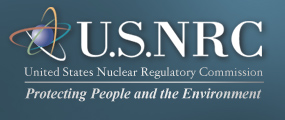Resolution of Generic Safety Issues: Item A-19: Digital Computer Protection System (Rev. 3) ( NUREG-0933, Main Report with Supplements 1–35 )
DESCRIPTION
At the time this issue was identified in NUREG-0371,2 trends in the design of nuclear power plants showed an increase in the use of digital computer technology in safety-related instrumentation and control systems. The first application of this technology was Arkansas Nuclear One, Unit 2 (ANO-2), where digital computers were used in the initiating logic for two reactor trip parameters. After the ANO-2 application, other digital computers, such as core protection calculators, were installed by licensees to provide reactor trip signals.
Since digital technology is considerably different from analog technology, the criteria appropriate for the safety review of digital computer-based systems are different from those used for analog-based systems. Thus, in this issue, the staff identified the need to standardize the safety review of reactor protection systems that incorporated digital computers. It was believed that the results of such standardization would be: (1) the definition of the staff's requirements for the design, development, and qualification of digital computers for use by applicants; and (2) an SRP11 that would define uniform and consistent guidelines for the conduct of the staff's safety review.
CONCLUSION
In 1982, ANS and IEEE jointly approved the standard ANSI/IEEE-ANS-7-4.3.21324 which established a method for designing, verifying, and implementing software, and validating computer systems used in the safety-related systems of nuclear power plants.1237 In 1985, the NRC issued Regulatory Guide 1.1521325 which endorsed the method in ANSI/IEEE-ANS-7-4.3.2-1982.1324 At the time this issue was evaluated in 1991, the staff was conducting a research program to investigate the use of digital computer safety systems at nuclear power plants.1286 In particular, specific licensing needs in the area of microcomputer and Artificial Intelligence Systems had been identified and were to be addressed. The desired end product of the research effort was a regulatory guide for the design, development, acceptance testing, and periodic functional verification of Class 1E computer safety systems, and an SRP11 addendum providing review guidance for digital computer systems in nuclear power plant safety systems (by referencing Regulatory Guide 1.1521325 and the new regulatory guide).
Since this issue addressed the use of alternative (i.e., digital instead of analog) technology for nuclear power plant safety systems, it was not intended that the use of digital technology would result in a change in the safety of existing nuclear power plants. Thus, the issue addressed the staff's efforts in improving its capability to make independent assessments of safety and was classified as a Licensing Issue.
As a part of the improvements to NUREG-0933, the NRC staff clarified in SECY-11-0101, "Summary of Activities Related to Generic Issues Program," dated July 26, 2011,1967 that the Generic Issues Program will not pursue any further actions toward resolution of licensing and regulatory impact issues. Because licensing and regulatory impact issues are not safety issues by the classification guidance in the legacy Generic Issues Program, these issues do not meet at least one of the Generic Issues Program screening criteria and do not warrant further processing in accordance with Management Directive 6.4, "Generic Issues Program," dated November 17, 2009.1858 Therefore, this issue will not be pursued any further in the Generic Issues Program.
REFERENCES
|


